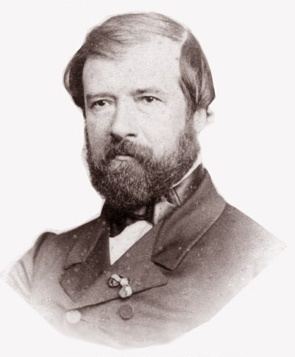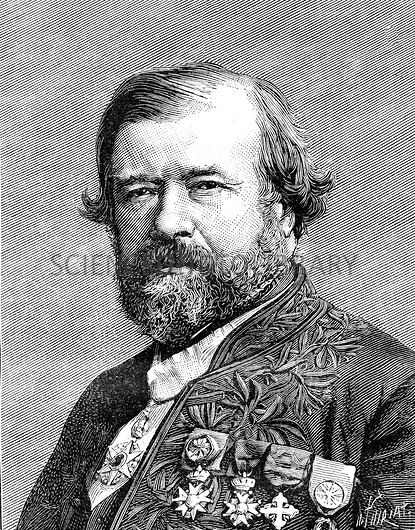Name Jules Jamin | ||
 | ||
Died February 12, 1886, Paris, France | ||
Jules Célestin Jamin (31 May 1818, Termes, Ardennes – 12 February 1886) was a French physicist. He was professor of physics at École Polytechnique from 1852 to 1881 and received the Rumford Medal in 1858 for his work on light. He improved Brewster's inclined interference plates with the development of the Jamin interferometer.
Contents

Biography
Jules Jamin was the son of Antoine-Pierre Jamin, colonel of the dragoons. As the recipient of a small educational grant from the city of Vouziers for excelling in his studies, he entered the college of Reims where he won nine awards in his first year. In 1838 he won the science competition award with honors, and in October of the same year he was accepted on first selection to enter École normale supérieure where he obtained a degree in physical sciences, mathematics and natural sciences. In 1841, he graduated first in the competition of comprehensive physical sciences. He obtained his first position at the college of Caen, where he succeeded Paul Desains. After two years, he joined the College Bourbon (today's lycée Condorcet) as a substitute teacher, then in 1844, he joined the College Louis-le-Grand as a teacher. While in Caen, he begun research in support of his thesis on the reflection of light on the surface of metals, for which in 1847 he received a doctorate in Physics.
In 1852 he was appointed professor of physics at the École Polytechnique, a position he held until March 1881, when Alfred Potier succeeded him. In 1858 he was awarded the Rumford Medal for his work on light and in 1863 he became a professor at the Faculty of Paris, succeeding César Despretz as the associate chair of experimental physics. Based on his lectures at the École Polytechnique, he published a compelling paper titles "General essay on Physics".
In 1868, he joined the French Academy of Sciences and in the same year he created and headed the Physical Research Laboratory funded by the École pratique des hautes études of which he was also the principal of the studies division.
In 1882, with arrival of a new generation of physicists who came to do research for their doctorates, such as Gabriel Lippmann, Henri Pellat and Anatole Leduc, he replaced Henri Milne Edwards as Dean of the Faculty with Edmond Bouty becoming the deputy director of the laboratory. In the same year, he presided over the Academy of Sciences and became permanent secretary in 1884 succeeding Jean-Baptiste Dumas.
His work encompassed the subjects of magnetism, electricity, humidity, and capillary action. In his work with optics, he discovered the elliptical polarization of light reflected from glassy substances in the vicinity of the angle of polarization, as predicted by Augustin-Louis Cauchy.
He married at Reims in 1851, Theresa Josephine Eudoxia Lebrun (1832-1880), with whom he had a daughter, Lucie who was the wife of the physicist Henri Becquerel, and a son, a painter, Paul Jamin.
Works
Tributes
His name is one of the 72 names inscribed on the Eiffel Tower.
